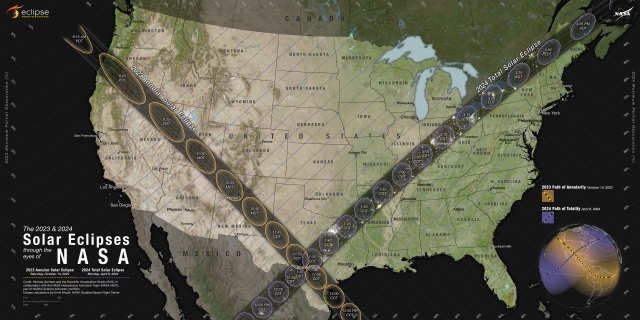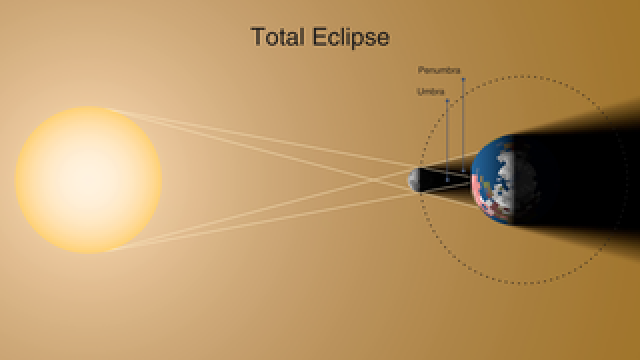During the afternoon of April 8th, 2024, a total solar eclipse will be visible across the Eastern US. If you are fortunate enough to work along the path of totality, expect larger numbers of visitors than is typical for the time of year. If you are outside of the path of totality, you will be able to view a significant partial eclipse throughout the lower 48. Engaging visitors in your eclipse efforts will form memories to last a lifetime. Join us for mini videos on eclipse science, mini webinars with NASA scientists, outreach specialists, and interpreters, and NASA resources to utilize with your visitors.
 NASA Science Visualization Studio
NASA Science Visualization Studio
What is a total solar eclipse and why does it happen here on Earth and no where else in the solar system?

Eclipse Safety Learn more > |
|
|
Interpreting the Eclipses: Recorded Webinars
Check out our past Interpreting Eclipses webinars below. The series will focus on heliophysics, lunar science, and eclipse science, outreach tips, community engagement techniques, citizen science opportunities, where to find subject matter expert assistance whether you are on the path of annularity or off the path, as well as pathways of connection using interpretive techniques to connect visitors to the event happening at your site.

